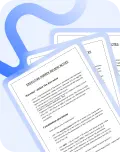#11392 - Compensatory Damages Paying For Harm - Modern American Remedies 4th Ed. Laycock
Compensatory Damages: Provide an award of money damages to aggrieved party to compensate for any loss or injury. Compensatory Damages = General Damages + Consequential (Special) Damages
General (Direct) Damages: Initial impact of the wrong, value of what was took (value of what was taken, destroyed, damages, or failed to deliver) **rough definition
Consequential (Special) Damages: Things that come after the initial wrong [everything that happens as a consequence of the initial impact] **rough definition
In Tort: Objective of damages it to make the plaintiff whole by awarding sufficient money to indemnify the plaintiff for the loss (position that would have been occupied “but for the wrong”)
-
In Contract: Of course, position would have occupied “but for the wrong”, but what does that mean?
-
Expectation: seeks to place Plaintiff in the position she would have occupied if the contract had been performed [this embodies the true rightful position standard, Neri]
Gross Expectancy: measured by the full payment or performance promised under the contract, which seller expected would cover the full cost of their own payment or performance plus a profit margin
Net Expectancy: expected profit on the contract
-
Reliance: seeks to put P in the position she would have occupied if the contract had never been made
Essential Reliance: expenditures necessary to perform the contract
Incidental Reliance: all other reliance, etc. foregone opportunities
**If defendant can prove that plaintiff would have lost money on the contract, the rule is that any loss must be subtracted from any reliance recovery (damages for breach should not make P better off than if K was fully performed)
-
| CONTRACT COMPENSATORIES All these remedies attempt to put buyer/seller in place they would have been had contract been performed (the parties “rightful position”) Market price not necessarily = TC? Incidental Damages reasonable charges incurred because of other party’s breach (cost to store goods because of breach, cost to advertise to try and resell because of breach etc.) Consequential Damages Everything that comes after the initial wrong (“everything that happens as a consequence of the initial impact”)
SELLER’S REMEDIES FOR BUYER BREACH
---------------------------------------------------------------------------------------------------------------------------- BUYER’S REMEDIES FOR SELLER BREACH
|
TORT COMPENSATORIES
|
|
Compensatory Damages in Fraudulent Misrepresentation:
Federal Rule: Expectancy damages recoverable only in contract, not in tort
State/UCC Rule: Usually allow recovery of non-speculative expectancies in fraud as well as in contract
Fraud Cases Measure of Damages = [K Price] – [Actual Value on DAY YOU BOUGH IT] (i.e. if it was worthless you get everything back
P must show that he RELIED on the fraudulent misrepresentation (but SCTOUS has held as a matter of law everyone relies on integrity of the market price)
In securities fraud cases, simply sowing that the price on the day of purchase was inflated because of the misrepresentation is not enough because at that instant you have suffered no loss (because you could immediately resell at same inflated price) Dura v. Broudo
Consequential Damages: Generally, things that come after the initial wrong (everything that happens as a consequence of the initial impact)
-
Recoverable, of course, only if the “initial wrong” was the proximate cause of the consequence:
-
Contract Cases: Hadley v. Baxendale: Must make it known to other party before contract is entered into of the consequences of breach (theoretically then...
-
purchase it now!

